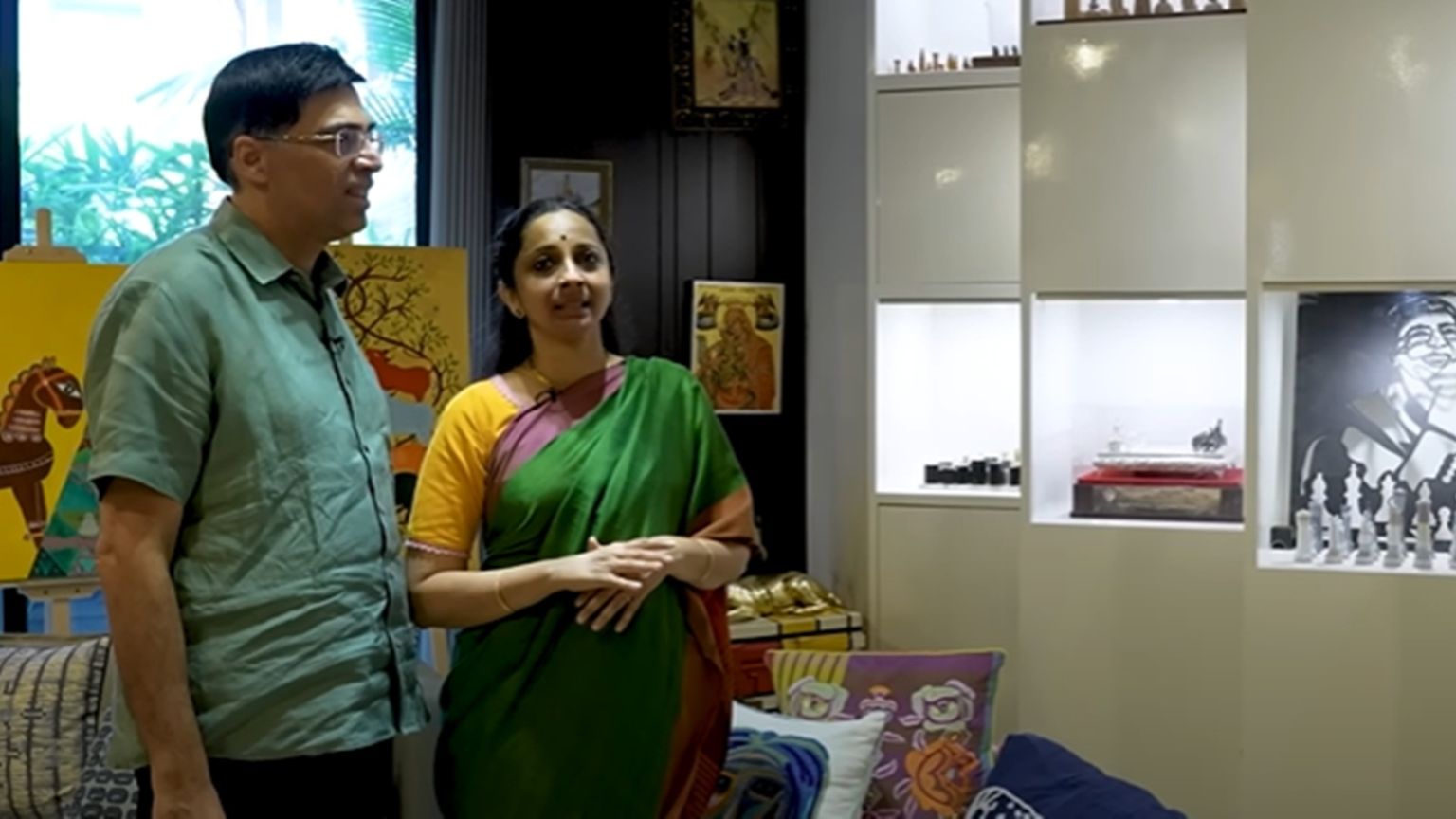It’s not just the trophies and titles that make Vishwanathan Anand’s home in Chennai extraordinary; it’s the memory-filled life the Anands seem to have lived.
His wife, Aruna, welcomes the viewers with easy warmth, and it quickly becomes clear that she’s the family’s storyteller. Pointing to their many chess sets, she says, “Each one has a story. This one here, it’s 27 kilos. Anand didn’t want to carry it from Mexico, but I told him, ‘I don’t mind leaving you behind, but I’m not leaving this chessboard behind.’” She laughs, remembering how Anand carried it on his lap all the way home.
That board is just one of many. The Tamil Nadu government gifted a puzzle-like set after his first world title. A Spanish one from the town they lived in, rich with Islamic and Jewish patterns. Another set from Chile with statues and lapis lazuli. But the Mexico board remains Aruna’s favourite. “My favourite is this 27 kg. Not because it’s very beautiful—but because Anand had to carry it all the way from Mexico,” she said.
Then there’s a strange, rotating piece that looks like a chessboard but might have once been something else—maybe a writing desk. They found it in Anand’s childhood home after his father passed away. “I don’t know where it came from. It just showed up in his house one day,” Aruna says.
One set that holds deep meaning was made from paper. “These chess pieces were done in origami by Arvind Sundar, an artist my son really admires,” she explains. “We reached out to him without saying who we were, just told him our son was a fan. He came over, spent three hours with him, and only later realised Anand was his father.”
The artist’s kindness clearly left a lasting impression. Aruna smiles, “It was so touching… someone of his talent spending time with a young boy like that.”
Much of the home is filled with their son’s artwork. He loves Indian folk styles, and his paintings often mix nature, mythology, and maths. One shows the Gajendra Moksha story—a famous tale where an elephant calls out to Lord Vishnu while being attacked by a crocodile—using something called Penrose tiles, a type of geometric pattern.
Story continues below this ad
“It’s one of my favourites,” Aruna says. “I love the colours. And the way he connects maths and stories—it’s beautiful.”
Another piece is inspired by how tiger cubs recognise their mothers by their stripes. “He thought it was amazing. Even animals use patterns.”
In another part of the house, Anand’s trophies are displayed—each one a piece of his journey. From the Arjuna Award in 1985 to his World Championship wins in 2007, 2008, 2010 and 2012. There’s even a special trophy from 2012, made from printed metal sheets, each showing key games from chess history.
“This was my first big international win,” Anand says, pointing to the World Junior Champion title in 1987. “It was the first time my name appeared in the paper.”
Story continues below this ad
He laughs as he recalls skipping assembly the day his name was announced in school—and getting called to the principal’s office because of it. “I thought I was in trouble. Turned out, they just wanted to know who I was.”
Outside, their garden holds something more personal—plants brought from Anand’s parents’ house after they passed away. “They’ve settled in here like they belong,” Aruna says softly. “Whenever a flower blooms, I remember how his mother used to pick it every morning.”
Her morning routine begins here: coffee, watering the plants, and hoping her son makes it to school on time.
“That’s how the day starts,” she says with a smile.














